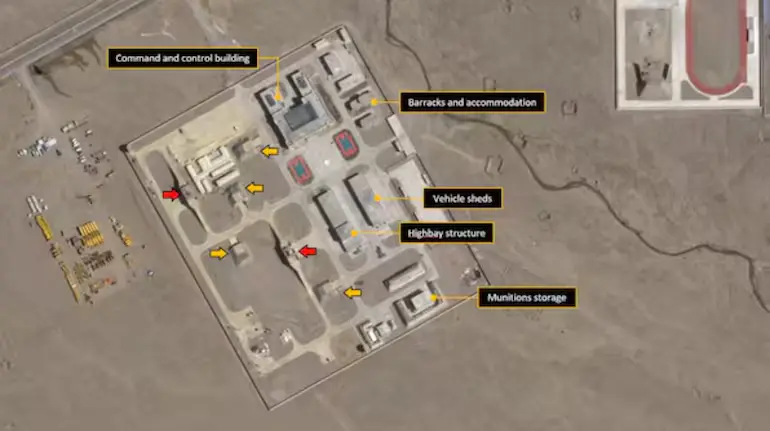Fresh satellite imagery has unveiled the construction of a significant air defense installation by China along the India-China frontier, specifically on the eastern shores of Pangong Lake in Tibet. This site is approximately 110 kilometers away from the location of the 2020 Galwan clash, signaling a notable enhancement in Beijing’s military presence in the sensitive Ladakh region and raising alarms about its long-term strategic intentions.
Reports indicate that the newly established facility is outfitted with various military infrastructure, including command and control centers, barracks, vehicle sheds, munition storage, and radar installations. One of the standout features is a series of concealed missile launch positions equipped with retractable sliding roofs, specifically designed to accommodate HQ-9 long-range surface-to-air missile (SAM) systems. This innovative design allows for Transporter Erector Launcher (TEL) vehicles to remain hidden while being capable of launching missiles directly through the roof, significantly improving both their survivability and operational readiness.
The architectural design of this installation bears a striking resemblance to similar missile shelters previously identified in the South China Sea, suggesting a consistent pattern of fortified missile deployments by China in strategically significant areas. A comparable setup has also been observed at Gar County, located near India’s recently upgraded Nyoma Airfield, which is roughly 65 kilometers from the Line of Actual Control (LAC).
Analysts propose that these installations are interconnected via wired data networks, aimed at integrating air defense components with real-time command and control systems. The construction of the facility appears to be ongoing, with reports suggesting the emergence of a second site near Pangong Lake, which may serve as either another SAM battery or a weapons storage hub.
Military experts believe that China’s growing infrastructure in this region reflects a tactical strategy to bolster its air defense capabilities and reinforce deterrence along contested borders. By replicating its South China Sea model within the Ladakh context, Beijing seems to be crafting a fortified air defense perimeter intended to maintain a tactical edge and enhance its rapid response capabilities in the face of any potential challenges from India.















